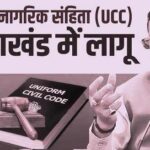उत्तराखण्ड चिपको आंदोलन क्या है?
उत्तराखंड का चिपको आंदोलन 1973 में शुरू हुआ एक ऐतिहासिक और प्रेरणादायक संघर्ष था, जिसने न केवल पर्यावरणीय संरक्षण की दिशा में महत्वपूर्ण कदम उठाए, बल्कि महिलाओं की सामाजिक भूमिका और सामूहिक शक्ति को भी उजागर किया। इस आंदोलन ने यह सिद्ध किया कि अहिंसा और सामूहिक प्रयासों से बड़े से बड़े मुद्दों का समाधान संभव है।
आंदोलन की पृष्ठभूमि
1970 के दशक में उत्तर प्रदेश के चमोली जिले के रैणी गांव के पास स्थित पेंग मुरेंडा जंगल को लकड़ी के लिए काटने की योजना बनाई गई थी। यह जंगल स्थानीय ग्रामीणों की आजीविका का महत्वपूर्ण स्रोत था, जहाँ से वे ईंधन, चारा और अन्य आवश्यकताएँ प्राप्त करते थे। जब यह खबर गाँव में पहुँची, तो महिलाओं ने एकजुट होकर जंगल की रक्षा का संकल्प लिया।
गौरा देवी का नेतृत्व
गौरा देवी, रैणी गाँव की महिला प्रधान, ने इस संघर्ष की अगुवाई की। उनके नेतृत्व में महिलाओं ने ठेकेदारों और उनके मजदूरों को जंगल से बाहर खदेड़ दिया। यह घटना चिपको आंदोलन के रूप में इतिहास में दर्ज हुई।
आंदोलन का विस्तार और प्रभाव
इस आंदोलन ने उत्तराखंड के अन्य हिस्सों में भी फैलकर वनों की अंधाधुंध कटाई के खिलाफ जन जागरूकता पैदा की। सुंदरलाल बहुगुणा और चंडी प्रसाद भट्ट जैसे पर्यावरणविदों ने इस आंदोलन को राष्ट्रीय स्तर पर प्रस्तुत किया। आंदोलन के परिणामस्वरूप, 1981 में 30 डिग्री ढलान से ऊपर और 1,000 मीटर से ऊँचाई वाले जंगलों की व्यावसायिक कटाई पर प्रतिबंध लगाया गया।
महिला सशक्तिकरण और सामाजिक परिवर्तन
चिपको आंदोलन ने महिलाओं की सामाजिक स्थिति में बदलाव लाया। इसने यह सिद्ध किया कि महिलाएँ न केवल परिवार की देखभाल करती हैं, बल्कि समाज और पर्यावरण की रक्षा में भी महत्वपूर्ण भूमिका निभाती हैं।
आधुनिक संदर्भ: चिपको आंदोलन 2.0
वर्तमान में, उत्तराखंड में सड़क चौड़ीकरण के नाम पर 3,000 से अधिक पेड़ों की कटाई की योजना बनाई गई है। इस प्रस्ताव के खिलाफ स्थानीय लोग एकजुट होकर चिपको आंदोलन 2.0 की शुरुआत कर रहे हैं। महिलाएँ पेड़ों से चिपककर उनकी रक्षा का संकल्प ले रही हैं, और हस्ताक्षर अभियान चला रही हैं। यह आंदोलन पर्यावरणीय संरक्षण की आवश्यकता और विकास की योजनाओं के बीच संतुलन की आवश्यकता को उजागर करता है।
निष्कर्ष
उत्तराखंड का चिपको आंदोलन न केवल पर्यावरणीय संरक्षण का प्रतीक है, बल्कि यह सामाजिक जागरूकता, महिला सशक्तिकरण और सामूहिक प्रयासों की शक्ति को भी दर्शाता है। यह आंदोलन हमें यह सिखाता है कि यदि हम एकजुट होकर किसी उद्देश्य के लिए संघर्ष करें, तो कोई भी शक्ति हमें अपने लक्ष्य तक पहुँचने से रोक नहीं सकती।
Read Also : स्याही देवी मंदिर उत्तराखंड







